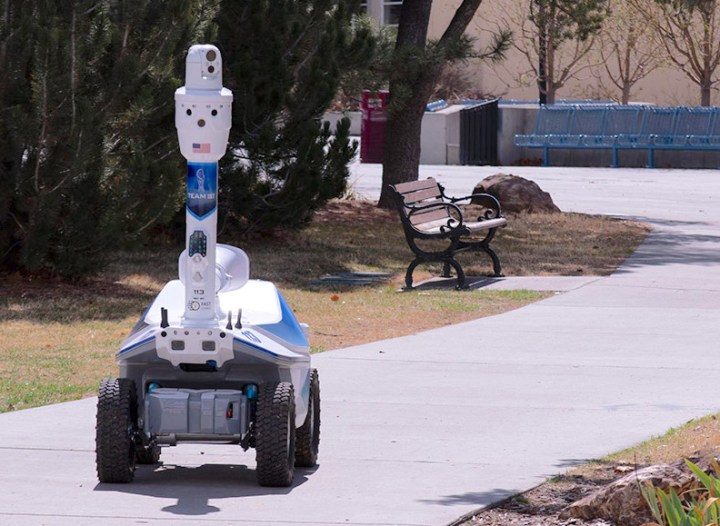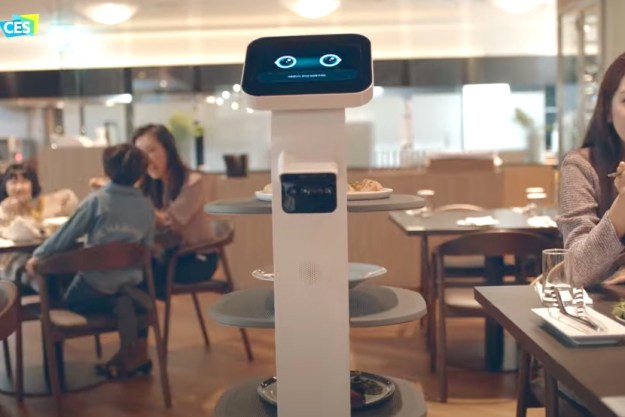
A number of U.S. schools are testing AI-equipped security robots designed to roam the campus around the clock looking for unwanted visitors.
School safety is an ongoing concern for staff, students, and parents, with mass shootings at the extreme end of things to be worried about.
Santa Fe High School in New Mexico is one of the first to pilot a new autonomous robot from Albuquerque-based Team 1st Technologies, the Wall Street Journal reported.
The 5-foot, 400-pound robot moves along on wheels and uses a camera at the top of a mast to provide 360-degree video to the school’s security team. Constantly on the lookout, it uses AI to learn a school’s various characteristics, including its layout and patterns of activity.
The robot can recognize aggressive or unusual behavior and move toward a perceived intruder, letting them know that they’re being observed while buying time for security to respond.
While some will have concerns about privacy, the robot doesn’t have any facial recognition capabilities, and for the current pilot program, officials at Santa Fe High School are responsible for handling the captured footage and therefore decide how long to store it.
A teacher at the school told the Journal that the robot, which he described as a “seven-camera dog,” could be useful for monitoring isolated parts of the campus that may not receive so much attention from the human members of the school’s security team.
Team 1st Technologies has declined to charge the school for the trial, but normal rates for the robot are believed to be around $65,000 for a full school year.
The Journal notes that Team 1st Technologies is among a number of companies building security robots for schools, and if the 60-day pilot in Santa Fe proves successful, such machines could soon be keeping a watchful eye over other schools, too.
It’s not just schools that are experimenting with security robots. New York City is currently trialing several robots for law enforcement, though a similar effort several years ago was scrapped following a public outcry over a range of concerns.
Editors' Recommendations
- AI-powered commentary is coming to next month’s Wimbledon
- Amazon deploys AI to summarize product reviews
- Amazon plans ‘once-in-a-generation’ changes for Search, job ad reveals
- Zoom just fixed a major security flaw on Mac. Here’s why you should update now
- Google Smart Canvas gets deeper integration between apps



